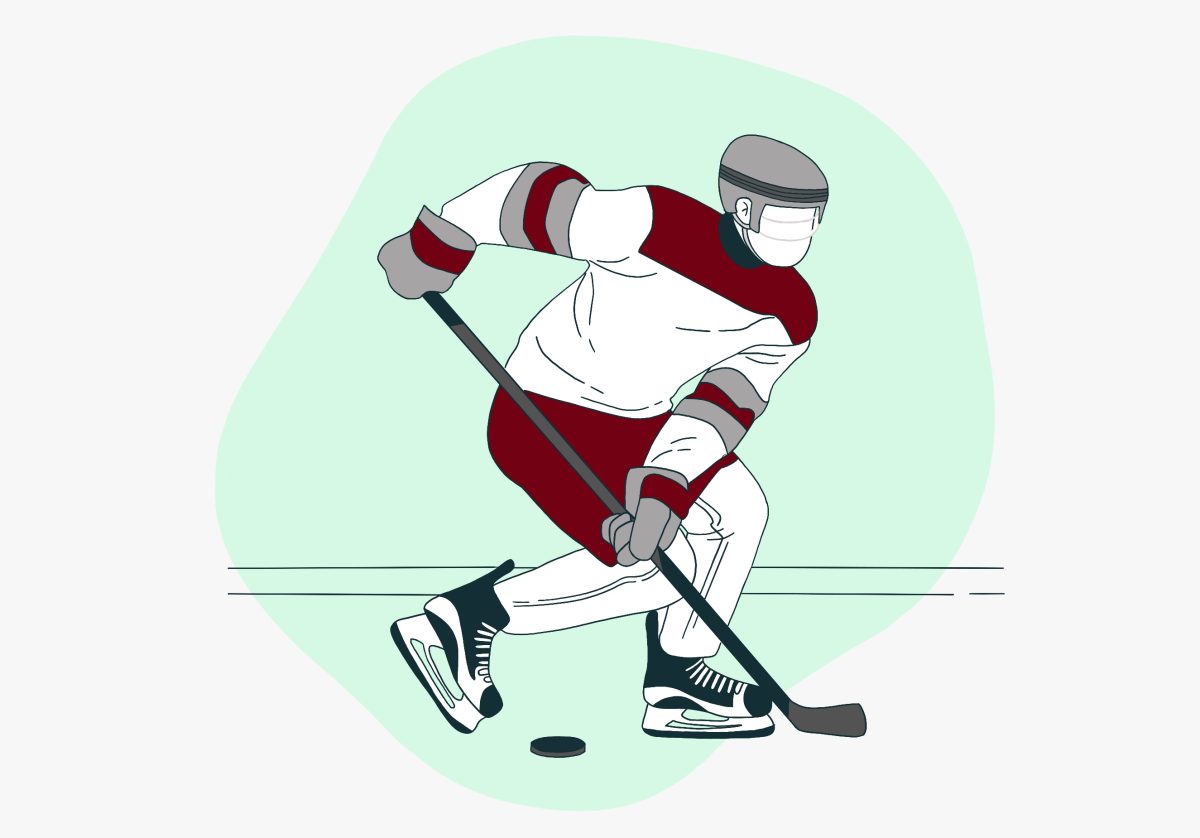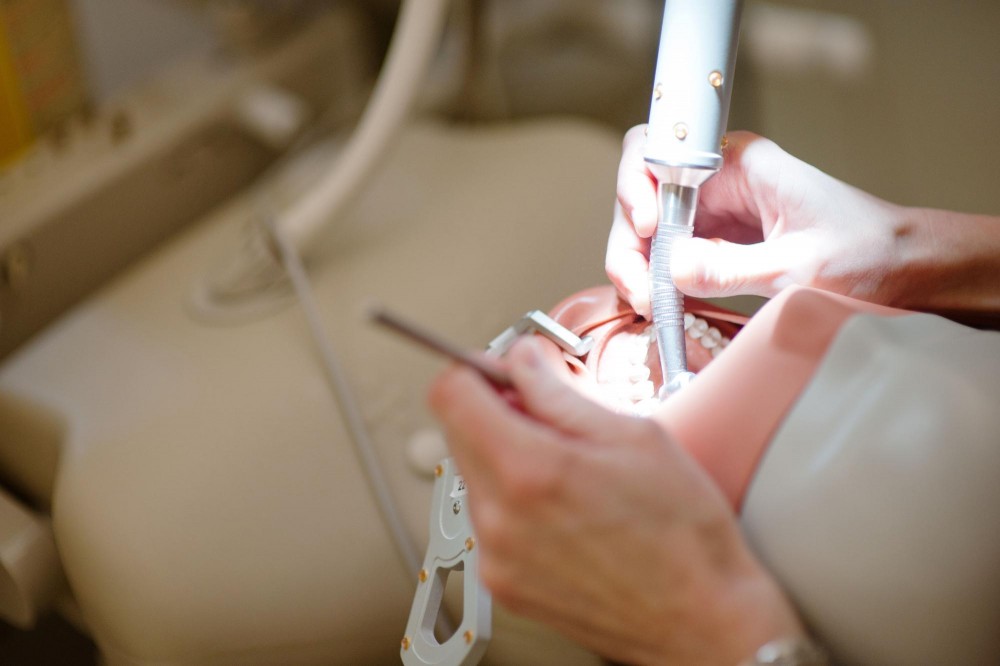In 2008, leaders of the University of MinnesotaâÄôs School of Dentistry got what they were looking for âÄî a clinic to put the institution at the forefront of dental education.
Part of the clinic featured DentSims, a virtual simulation tool that the University said could revolutionize the way dental students learn. The school was the first in the Big Ten to get them.
Each DentSim features a mannequin with an adjustable head, a lifelike mouth and a set of plastic teeth. An infrared camera tracks studentsâÄô work and displays it on a screen. A computer offers instant feedback on how students perform and provides a 3D representation of the tooth theyâÄôre operating on.
The University spent $1.5 million for 20 DentSims during a roughly $10 million renovation of Moos TowerâÄôs fourth-floor clinic area. The DentSims cost $75,000 each and sit in the School of DentistryâÄôs Advanced Simulation Clinic, part of a larger simulation area.
But the clinic hasnâÄôt been the resource that administrators said it would be.
Nearly four years later, the dummies sit unused about 85 percent of the school year, according to a Minnesota Daily records analysis. The lab is in use for an average of 8.4 hours a week.
But only half of that use is for classes, and theyâÄôre mostly introductory ones. Tours, cleaning and maintenance take up the other half of the labâÄôs schedule.
The clinic remains controversial among faculty and students as a teaching and grading tool. It also comes at a substantial price.
Even though itâÄôs rarely used, the University still touts the DentSim as a transformative teaching device. Some say the publicity doesnâÄôt match the product.
âÄòGold standardâÄô
Research at the University and across the country suggests DentSims both help students learn faster and cut failure rates.
Judith Buchanan, interim dean of the UniversityâÄôs School of Dentistry, has been researching virtual reality teaching tools since the late 1990s.
Buchanan found students learn almost twice as fast with the technology, she told the Daily in 2006.
Since then, others like Heather Conrad, an assistant dentistry professor at the University, have also done research on the DentSim.
Image Navigation, the company that manufactures DentSims, displays more than a dozen examples of research on its website lauding simulation learning.
Lawrence Obstfeld, CEO of Image Navigation, said his companyâÄôs product is âÄúnot kibitzing.âÄù
âÄúWe allow the student to work off a gold standard,âÄù he said, âÄúso DentSim is an incredible tool for any school.âÄù
âÄòThey sit there vacantâÄô
Former School of Dentistry Dean Patrick Lloyd celebrated the UniversityâÄôs new DentSim units when the lab opened in 2008.
âÄúThe equipment has made us re-evaluate the way we educate dental students,âÄù Lloyd said in a statement from that year. âÄúItâÄôs dental education designed for students raised in the digital era.âÄù
But nearly four years later, the machines sit largely unused. Faculty members and students say the lab is often empty when they walk by it.
Schedules from fall 2010 through fall 2011 show the clinic is unused about 85 percent of the time. The clinic is booked for an average of 8.4 hours a week.
âÄúThey sit there vacant most of the time,âÄù said one clinical faculty member who asked to remain confidential for fear of risking his job.
This spring, the clinic sat empty for the first half of March, except for an admissions demonstration. In the last week of the month, there were three different tours or demonstrations, two days of service and two hours of makeup class. The clinic was not used in May 2011 for anything other than cleaning.
At least 25 universities worldwide use DentSim, according to Image Navigation.
One is the University of Pennsylvania, which lab director Margrit Maggio said has 15 units of an older model.
âÄòBells and whistlesâÄô
An attractive young woman stands in front of a man practicing his golf swing on a simulator.
âÄúWe have racing and flight simulators, even golf simulators,âÄù she says. âÄúSo where is virtual reality going next?âÄù
Former School of Dentistry Dean Lloyd has the answer.
âÄúItâÄôs this guy,âÄù he says, patting a rubber dummy with an open mouth on the head.
âÄúAt the University of Minnesota, weâÄôre learning dentistry in a whole new way,âÄù he says. âÄúAt our simulation clinic, weâÄôre practicing on lifelike mannequins. TheyâÄôre connected to computers that give us immediate feedback on our studentsâÄô performance.âÄù
This is not a live demonstration, but an advertisement commissioned by the University in 2007. The University spent $530,000 to produce four television commercials as part of its âÄúDriven to DiscoverâÄù campaign. The 30-second spot featuring the Advanced Simulation Clinic reached about 80 percent of the state over the next year.
âÄúThe Advanced Simulation Clinic makes for a great story to tell, both visually and as a remarkable resource for students,âÄù University spokesman Jeff Falk wrote in an email.
With the clinic, the University continues to market itself as a leader in advanced education. President Eric Kaler visited Sept. 19 as part of his inaugural week public relations blitz. He and his wife, Karen Kaler, practiced on one of the machines.
The machines are also used to attract potential dental students, for tours and for foreign dentists to train on.
Some weeks, such tours and demonstrations match or outnumber classes. They make up nearly a quarter of the time the lab is used, but priority is given to faculty members scheduling class time.
The previously mentioned clinical faculty member called the machines an âÄúadministrative toy.âÄù
âÄúWhen they wanted to impress the president with the School of Dentistry, what did they show him?âÄù he said. âÄúThey held his hand, they brought him into the computer simulation area and they turned on all the lights and bells and whistles. They let him play with it because you can do that.âÄù
He said DentSims fool people who arenâÄôt familiar with dentistry and the machineâÄôs actual capabilities.
Buchanan wrote in an email that the technology is âÄúdesigned for the primary purpose of helping students develop psychomotor skills.âÄù The Advanced Simulation Clinic is just one of several labs that dentistry students learn in, she wrote.
Many directly involved in using the clinic for courses, research or demonstrations declined to comment publicly about the lab or didnâÄôt return multiple requests for comment.
Lloyd also declined to comment.
âÄòOn lockdownâÄô
When the Advanced Simulation Clinic opened in 2008, Lloyd told the Daily that advanced technology would help with recruitment.
The University invites competitive applicants for a tour of the school, including the clinic, as part of their interview.
An upper-level dentistry student who asked for confidentiality because of a student leadership position came to the University because of the DentSims and other technological upgrades in the school that were touted at the time.
The student said itâÄôs well-known within the school that the lab is rarely used and that there are problems with the technology.
âÄúEverybody thatâÄôs there knows it,âÄù the student said. âÄúThe students all know it, the faculty all know it and the administration thinks itâÄôs the greatest thing since sliced bread.âÄù
Dentistry second-years Nicole Haus, Salma Helal and Amy Ott said the clinic was plugged during their interviews at the School of Dentistry, but its use never really materialized.
âÄúWhen we did our interview, that was huge,âÄù Ott said. âÄúThey were like, âÄòOh, look at this, no other school has this.âÄôâÄù
The three agreed that their introductory class in the clinic wasnâÄôt very useful and glossing over the material was easy. If she messed up drilling a tooth, Ott said she would just redo it.
âÄúI wouldnâÄôt do it the right way,âÄù she said. âÄúYou can totally cheat the system for the class.âÄù
A handful of courses use DentSims. Students spend at least 17 hours in the lab to learn 3-D thinking and build psychomotor skills, among other curriculum.
âÄúThe faculty have determined that theyâÄôre very limited usage and they utilize them to the fullest extent that they think is going to benefit the students,âÄù the clinical faculty member said.
Now, Ott, Helal and Haus wish they could go back into the lab after learning more theory about the procedures they muddled their way through the first time.
But theyâÄôre not allowed to access the lab for after-hours practice, although that might change in the future. The clinic must be properly staffed because the DentSims are âÄúsensitive to misuse,âÄù Buchanan wrote in an email.
âÄúThey hype it up and then you get here and itâÄôs on lockdown,âÄù Helal said.
âÄòSuperglue and gumâÄô
The University has an all-inclusive maintenance contract with Image Navigation that costs $80,000 each year.
The DentSim contract is comparable to a different agreement the school has for its clinical information system, which âÄúdrivesâÄù the clinical operations of the school, Dentistry school Chief Administrative Officer Jeff Ogden said. The clinics serve about 100,000 patients each year.
Ogden, who signed the maintenance agreement, said that because the units are on the cutting edge of technology, theyâÄôre prone to small hang-ups. The University hasnâÄôt had a disastrous failure yet, he said.
Students and faculty members describe the units as finicky, fickle machines that donâÄôt work correctly.
The three second-years said the sections for the introductory psychomotor class had fewer students than machines. If a unit malfunctions, a student can switch to one that works.
In Pennsylvania, Maggio said she has used âÄúsuperglue and gumâÄù to hold parts of her older models together. But, like Buchanan and others, she stands behind the technology because of its educational potential.
The upper-level student disagreed.
âÄúYou have administrators who think thatâÄôs the new way of dentistry, and it doesnâÄôt work.âÄù











